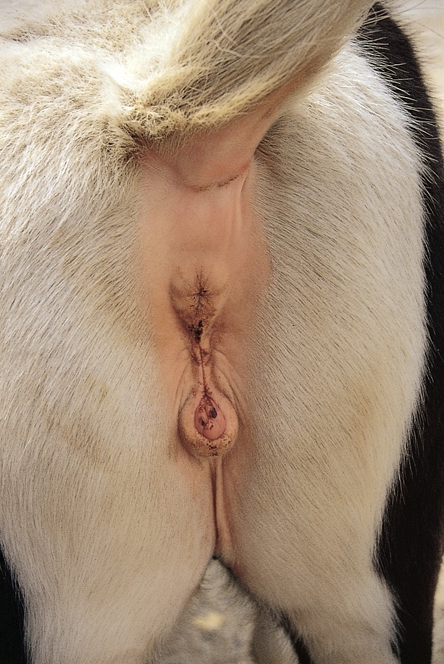Equine Reproduction and Stud Medicine Q&A 15
Jump to navigation
Jump to search
| This question was provided by Manson Publishing as part of the OVAL Project. See more Equine Reproduction and Stud Medicine questions |
This mare is exhibiting eversion of the vulvar lips and exposure of the clitoris:
| Question | Answer | Article | |
| What is the significance of this behavioural response? | This is colloquially termed ‘winking’ and is commonly associated with oestrous behaviour. The response may also be seen in some mares during dioestrus and late pregnancy or, occasionally, even due to vulval irritation. The response is best assessed in the presence of a teaser stallion since some mares ‘show’ inappropriately to stimulation of the perineal region or due to environmental triggers. The response may differ if more than one stallion is used for teasing, and normally cycling mares are best teased daily with the same stallion.
|
Link to Article | |
| Which other behavioural criteria are useful for detecting oestrus in the mare? | Winking, squatting, tail raising and urination. Failure to reject the stallion by absence of kicking response is also a useful assessment, although excessive biting by the stallion can result in dioestrous signs, such as kicking, striking and biting.
|
Link to Article | |
| How reliable are behavioural responses of the mare when attempting to predict ovulation? | They are not accurate measures of the time of ovulation. Fifty per cent of mares may exhibit oestral behavioural characteristics from 5 days before to 2 days after ovulation. There is not usually an immediate loss of behavioural response after ovulation, rejection of the stallion mirrors the rise in plasma progesterone concentration. This takes approximately 5 days to reach plateau values and during the first 48 hours some behavioural responses may be exhibited.
|
Link to Article | |
